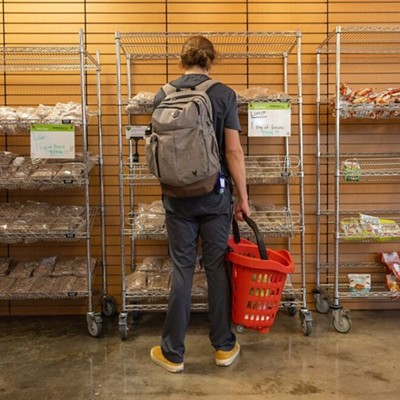The problem with complacency is that it's a lie. Invariably, the moment you decide you have everything under control, and you can coast to whatever particular finish line you have in mind, you trip over a rock and fall flat on your face. Or, as is the case here, just when you decide your sourdough starter is healthy and thriving, just days away from being ready for baking, you get mold.
After my whole wheat sourdough waffles, I switched back to AP flour, and everything seemed to be fine. There wasn't even a lag, similar to the one I'd noticed when switching from AP to whole wheat. Then, I pulled the plastic wrap from my starter one recent morning, and immediately noticed an oddly sweet smell commingling with the fresh yeast aroma. I recognized it right away as the smell of sandwich bread just beginning to mold. I didn't see any visible mold, so I fed it as usual, covered it, and hoped for the best. I'm pretty sure that was my fatal mistake.
The next morning, I was again greeted by that foreboding sweetness. This time, it was coupled with a fine and fuzzy blanket of snow-white mold. Swallowing the lump of despair and panic rising in my throat, I calmed myself down and began to research possible solutions. Everything I found suggested that my starter was salvageable. Well, perhaps it might have been.
If discovered early, a mild mold problem can frequently be solved by carefully scraping the surface layer of your starter, removing all traces of mold. When you've scraped the entire surface and removed all visible mold, scrape the surface again. Between scrapings, clean your utensil, to avoid re-introducing the mold into the rest of your starter. After you're done scraping, carefully transfer your remaining starter to a clean bowl, and commence feedings as usual. As you will be eliminating a large proportion of your yeast and bacterial populations, you will also slow down your starter, likely adding a few extra days to the process.
At this point, I think you can see where I went wrong. When I fed my starter that first moldy morning, I also distributed the mold throughout my starter. I had hoped that the ecosystem would be healthy enough to eliminate any mold if I just kept feeding it, but I was clearly premature in that assessment. A few days after first contact, the surface of my starter resembled the pocked and cratered face of a syphilitic courtesan -- once beautiful, now a revolting tragedy.
It pained me to pour my starter, so lovingly tended these past weeks, down the kitchen sink, the angry growl of the InSinkErator reminding me of my folly. In hindsight, my starter probably had been healthy and well developed enough to pop into the refrigerator, stunting its growth but protecting it against that of mold in the process. My new starter has been going for a couple of days, now. It's just starting to show signs of life.
Follow Eating Our Words on Facebook and on Twitter @EatingOurWords






